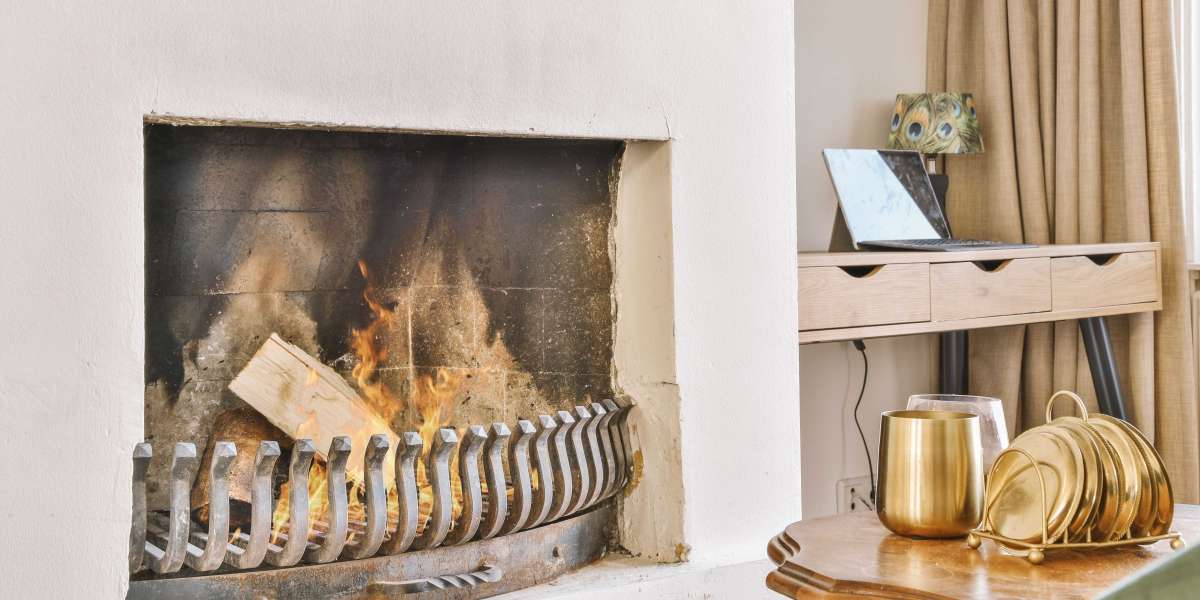In contrast to traditional open fireplaces, wood stoves are specifically designed and optimized to burn firewood. This allows them to comply with stricter emission standards.
Wood burning stoves produce sparkling yellow flames and soft crackling sounds. They also give you a primal feeling of warmth. However the smoke they release includes carbon monoxide and harmful air pollutants, such as benzene, formaldehyde and polycyclic aromatic hydrocarbons.
Efficient
Fireplaces and stoves that burn wood provide beautiful and natural heat to the home, but they are also incredibly efficient. A high-quality wood burner can be eco-friendly up to 77%. It is essential to get the most value of your log burner in light of increasing energy costs. The good news is that it's now easier than ever before to do!
The moisture content of wood is one of the main factors that determines the efficiency of a wood-burning stove is. We recommend using only dried and seasoned wood that has dried over a period of at least one year, and in some cases, two years. The more dry the wood more dry, the better it burns. This means less smoke, and less harmful emissions.
Another advantage of a wood burning stove is that it's an eco-friendly source of fuel, which is great for the environment. Furthermore, by buying locally-sourced firewood, you are helping to support the active management of woodlands which is a wonderful thing for wildlife.
The only thing that a wood burning stove requires in terms of maintenance is to take away and get rid of the ash. This can be a bit of a nuisance, but is well worth it in order to ensure that you get the most heat from every log. If you wait for the ashes to cool completely They can also be used as a non-toxic and green melting ice. They can also be used to polish jewellery and absorb the odors.
A fireplace that burns wood is an old-fashioned classic. Although they are less popular than gas fireplaces, the allure and appeal of a roaring fire cannot be denied. They're ideal for cozying up to on cold nights and are an ideal way to create a warm and inviting space within your home. Choose a high-quality wood stove and you'll start reaping the benefits for many years to come! Our expert chimney sweeps are here to assist you in getting the most from your stove - give us a call today to find out more.
Low Carbon
Wood burners that are clean and efficient are among the best ways to save money on logs while keeping your home warm. They also support local woodland management. This is a fantastic way to support wildlife in your area.
Wood-burning fireplaces and stoves create very little pollutant if they are properly maintained and are used with dry, seasoned firewood. However, if they're not maintained well or using wood of poor quality the smoke that is produced by them is contaminated with fine particles (known as particulate pollution) that can cause irritation to the lungs and other organs. It also contains carbon monoxide and toxic air pollutants such as formaldehyde, benzene and polycyclic aromatic hydrocarbons. Inhaling air pollution can cause irritation of the lung and lead to asthma attacks, wheezing, coughing and irritation of the lungs. It may also cause heart disease, cancer or premature death.
Some people are concerned that wood-burning stoves contribute to climate change however this isn't true. Burning wood is a carbon-neutral energy source. Through the life of a tree, it absorbs carbon dioxide, and when it is burned, the carbon absorbed is released back into the atmosphere.
The wood is produced locally, which reduces the amount pollution that is produced during the transport process. It is essential to select hardwoods that have been seasoned and of top quality. They will burn longer and more evenly than softwoods.
Modern, EPA certified wood stoves and heaters (such as those manufactured by Charlton Jenrick) have much lower emissions than older stoves. They have been tested and certified to meet 2020 EPA standards, which are significantly more strict than previous emissions limits.
To prevent a build-up of exhaust within your home, all wood-burning stoves must be vented completely to the outside. All our current DEFRA-exempt and clean burn stoves can create clear exhaust when keeping the flames at a distance from the logs of wood and using dry, seasoned firewood.
A wood-burning stove equipped with an integrated unit or catalytic converter can provide the most efficient low carbon solution for heating. These units ignite gasses and particles from the initial burning in a second phase by mixing them with superheated air. The remaining gasses and particulates are pumped through a catalytic combustion unit to create a final and third combustion. This further reduces emissions to levels that are below the government standards.
Clean Burn
Cleanburn wood stoves burn fuel at the highest efficiency. This results in a minimum amount of emissions of particles into the air when burning wood. The air management system of the stove controls the intake and venting of gases, ensuring that the combustion process is conducted in a sealed and controlled environment. It also regulates the height of the flame to maximise heat output and minimise emissions.
This means your chimney and surrounding area will be cleaner than older stoves. Particulate matter (also known as particle pollution) from wood that is not fully combusted causes respiratory issues like wheezing and coughing and can contribute to the development of heart diseases, stroke, diabetes and other serious health conditions. Air pollution caused by wood burning is an important factor in poor air quality in urban areas.
The smoke from poorly combusted wood is a mixture of fine particulate pollution as well as hazardous air pollutants, including carbon monoxide, volatile organic compounds, nitrogen oxides, benzene, formaldehyde and polycyclic aromatic hydrocarbons. These particles can get into the lungs and other organs, causing discomfort, damage and even death. Airborne dust can also harm the surfaces in your home and create the impression of a rough surface to rooms.
When you are using a fireplace that is wood-burning it is important to use firewood of the highest quality that has been seasoned and dried. Hardwoods such as oak beech, ash and are the best choice for heating. Hardwoods are extremely dense and have more BTU than softwoods. They also provide more heat.
You should also check whether your local authority has any regulations regarding wood burning. These may include rules regarding odors and nuisances, as well as visible smoke emissions or smoke opacity limits.
If you have a wood burner with glass doors it is important to keep the glass clean of dirt and deposits. This can be done with a dry cloth or oven cleaner spray. You can also add bicarbonate of soda mixed with a small amount of water to the glass.
Regular maintenance of your stove and chimney is also crucial. This includes regular chimney cleanings to remove creosote and ensure proper functioning of your flue. Be sure to note dates for periodic inspections in your diary, as this will allow you to avoid costly repairs and prolong the life of your wood burner.
Low Maintenance
Many people opt to install wood-burning fireplaces due to the natural warmth they create. This type of fireplace requires a bit of maintenance and upkeep. The chimney, flue and stove are all potential sources of house fires if they are not cleaned and maintained regularly. Fireplaces can also provide heat in the event of an electrical outage, particularly during winter storms, when tree branches can fall and power lines can be ripped down.
By using a wood stove to heat your home, you can reduce your carbon footprint compared to other fossil sources of fuel like gas. Modern wood stoves and inserts are designed to conform to EPA (Environmental Protection Agency) standards which mean they emit very little carbon dioxide. The more well-seasoned wood that you use the more efficient the stove will be. You'll need less wood to achieve the same amount of heat.
Fireplaces require some attention and maintenance. They should be placed away from the combustible materials and have a screen in place. Cleaning the grate of ash and debris will aid in the flow of air and will stop the fire from dying out too quickly and keep your indoors clean. It is important to have your chimney and stove swept at least two times per year to prevent the accumulation of creosote which could cause an fire hazard or blockage and hinder the airflow.
A wood burning stove will need to be maintained on a regular basis and it may take time for a beginner homeowner to master the art of how to light, ignite, and maintain a steady fire in the fireplace. Once you've achieved the art of creating and maintaining the fire in your wood stove, it can be a source of enduring enjoyment that provides warmth and warmth to your home every year.
 Wood burning fireplaces have been in use in one form or another for over 500 years. They've gained a lot of attention due to their effectiveness, sustainability, and the natural warmth that comes from wood. Talk to your local Regency dealer about the advantages of wood stoves or inserts for your home if you're looking to buy an entirely new heater.
Wood burning fireplaces have been in use in one form or another for over 500 years. They've gained a lot of attention due to their effectiveness, sustainability, and the natural warmth that comes from wood. Talk to your local Regency dealer about the advantages of wood stoves or inserts for your home if you're looking to buy an entirely new heater.








